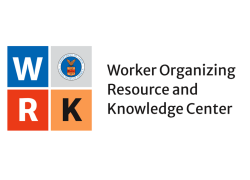
At the Department of Labor, our mission is “to foster, promote, and develop the welfare of the wage earners, job seekers, and retirees of the United States; improve working conditions; advance opportunities for profitable employment; and assure work-related benefits and rights.” America’s labor unions, likewise, have a long history of supporting actions that empower working people and advance our economy. Here are four ways labor unions complement the department's mission:
1. The department relies on worker reports to enforce federal employment laws effectively, and unions empower workers to report violations of the law.
- Unions negotiate for just cause standards for disciplinary action, including termination, and grievance and arbitration systems to enforce those standards. Under a just cause standard, employers can only fire workers for well-document cases of poor performance, misconduct, or other legitimate business reasons. Union-negotiated just cause protections provide workers with job security and empower them to report violations of federal labor and employment laws to the department with less fear of retaliation.
- Unions also train workers on their workplace rights and provide them with the knowledge necessary to enable worker reports of workplace violations. For example, unions establish health and safety committees that provide workers with risk education training and information on their rights under the Occupational Safety and Health Act.
2. Unions help the department achieve its workforce development goals by fostering strong labor-management partnerships and related training programs.
- For decades, union-sponsored and joint labor-management apprenticeship programs have offered a key pathway into good, middle-class jobs, and they have helped build diversity in the workplace.
- A study of Pennsylvania apprenticeship programs for the period 2000-2016 by Keystone Research found that while jointly sponsored union-employer apprenticeship programs accounted for 85% of all construction trade apprentices, they accounted for over 90% of apprentices who were women and men from underrepresented racial and ethnic groups. The study found graduation rates were also higher in joint union-employer programs. And, overall, starting and completion wage rates were 36% and 60% higher, respectively, for apprentices in joint union-employer programs than in nonunion ones.
- Another study from the Illinois Economic Policy Institute found graduates of joint union-employer apprenticeship programs earn more, are more likely to have private health insurance coverage, and are more likely to have access to pension plans than graduates of programs only sponsored by employers.
3. Unions help secure compliance with Occupational Safety and Health Administration standards and foster healthier and safer workplaces.
- One report surveying OSHA data in the construction industry found that union worksites had 34 percent fewer OSHA violations per inspection than nonunionized work sites, suggesting a positive link between unions and compliance with OSHA standards.
- Recent studies found that unionized workplaces had lower COVID-19 infection rates among workers and were more likely to adopt mask mandates than nonunionized workplaces. A 2020 survey of essential workers found that in the early days of the pandemic union members were more likely than nonunion members to regularly use personal protective equipment at work, to receive PPE and other disinfecting or sanitizing resources from their employers, to receive paid sick leave if they had symptoms of COVID-19, and to report being tested for COVID-19.
- A 2012 study found that unionized workplaces in the coal-mine industry had fewer traumatic injuries and fewer fatalities than nonunionized workplaces.
4. Unions help secure compliance with wage standards by negotiating contractually guaranteed wages.
- Unionized workers are less likely to experience wage theft because unions provide them with the necessary bargaining power to establish mechanisms to combat and remedy such violations of their rights. For example, through the collective bargaining process unions negotiate wages and a grievance and arbitration process to resolve disputes over wage violations. According to findings from a study titled Wage Inequality and Labor Rights Violations, a higher unionization rate goes hand in hand with fewer labor violations, including wage violations.
- Unions and collective bargaining also help shrink the racial wage gap between white and Black workers because Black workers are more likely than white workers to be represented by a union, and Black workers realize a larger increase in their wages from being in a union than white workers do.
- Unions also help raise wages for women. Hourly wages for women represented by a union are 5.8% higher on average than for comparable nonunionized women.
- Workers with strong unions set industry standards for wages and benefits that ultimately benefit all workers, unionized and nonunionized. On average, unionized workers earn 11.2% more in wages than similarly situated nonunionized workers in the same industry. And when unionized workers earn higher wages, nonunionized employers are pushed to pay higher wages to compete in recruiting workers.
For more information on how unions complement the department’s mission to foster and promote the welfare of workers and job seekers, you can read the department’s full policy paper here.
Raj Nayak is the assistant secretary for policy. Lynn Rhinehart is a senior counselor in the Office of the Secretary of Labor. The authors gratefully acknowledge the contributions of DOL Honors Attorney Nina Mozeihem to this blog and the accompanying policy paper.

 U.S. Department of Labor Blog
U.S. Department of Labor Blog



